Up With The Lark
Categories: Composing Activities for Classes, Listening starters for schools, Music Activities for schools
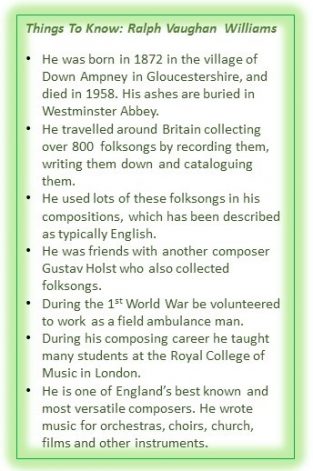 A composing activity using Vaughan Williams’ The Lark Ascending as inspiration.
A composing activity using Vaughan Williams’ The Lark Ascending as inspiration.
Chirrup, Whistle, Slur and Shake
- This music was inspired by the movements and songs of a bird called a lark.
- A lark is a bird that lives in open fields or meadows, has a beautiful song and flies upwards then hovers at a very high altitude over its nesting place.
- Listen carefully to Vaughan William’s music. How does he imitate the movements and call of a sky lark in this music?
- Observe the birds that live near your school. Maybe you could put our a bird table or hang up some nuts or seed for them so you can observe them through the windows.
- Listen to their songs. Watch them eat and fly. What other interesting habits do they have? Make a note of everything you see and hear.
- Choose one of the most interesting birds, and compose some music about it. Here are few ideas to help:
- When it’s on the ground, does your bird walk or hop? Or perhaps it has a combination of the two? Make your music walk or hop, or both.
- When it eats the food you put out, does it grab it and fly off or peck at it until it’s small enough to swallow. Have delicate, repeating, pecking music, or big, grabbing, vanishing music.
- When the bird flies does it glide or flutter or swoop or flap? This should be how you musical ideas move along. The rhythm could be fluttery with short, fast notes, or it could glide along on the breeze with long notes and high pitches.
- Is your bird a loner, or does it like to be in a flock of other birds? You could have a mixture of solo music and group music to demonstrate this.
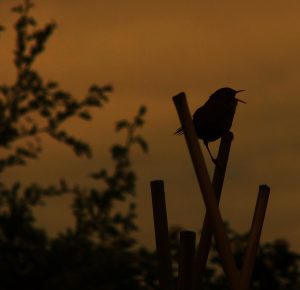
- What does your bird sound like? It’s hard to make imitations of bird sounds with classroom instruments, but you should describe the sounds then make other sounds that could be described in the same way. For instance, a wood pigeon makes a cooing sound, usually two notes, the first longer than the second – you could do this on a metal instrument by letting the first note ring on, but damping the second sound.
- Vaughan Williams chooses one sound to represent the movement of the lark flying upwards at the beginning of his piece – a violin, with the rest of the orchestra in the background. You could choose one instrument to be your main instrument with others in the background. He brings this idea back at the end.
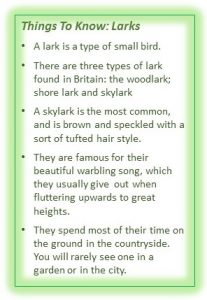
- As his piece goes on the orchestra has a more important role and we hear more of them. You could do this too. In fact sometimes the violin stops altogether and other instruments have important melodies instead.
- The violin plays a lot with the ideas of the opening, sometimes just a little fragment of the melody is heard. This is another great idea you should try.
- In the middle of this piece Vaughan Williams brings in a brand new idea in the orchestra – a folk song melody. Lots of composers do this – a new idea in the middle, then bring the first idea back at the end. There’s another idea to try.

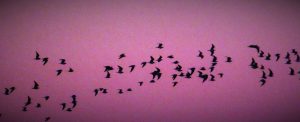
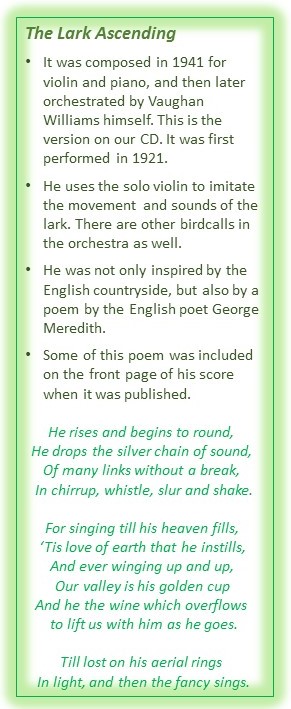
No comments yet.